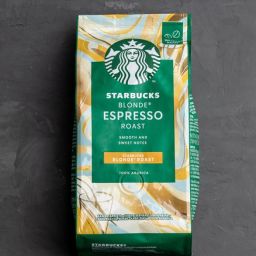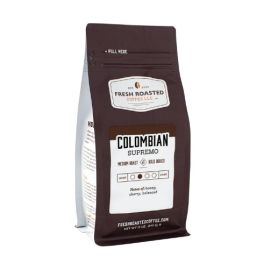
Iced coffee has surged in popularity, becoming a staple for coffee enthusiasts around the globe. Its refreshing quality, especially appreciated during the warmer months, appeals to a wide range of palates. The convenience of iced coffee, combined with the variety of flavors and preparations available, has contributed significantly to its standing as a favored choice among both traditional coffee lovers and new adopters seeking a cool, caffeinated beverage.
What Makes the Best Roast for Iced Coffee?
The roast of coffee beans is crucial when making iced coffee because it affects the beverage’s overall flavor, especially after ice is added. Generally, medium to dark roasts are preferred for their robust and enduring flavors that can stand up to the dilution caused by ice. These darker roasts bring out a rich, bold essence that remains pronounced even when chilled, which is why they are often the go-to choice for iced coffee preparations.
Medium roasts are appreciated for their balance of acidity and complex flavors, which can introduce a smooth, refreshing finish suitable for iced beverages. Dark roasts, on the other hand, offer a deeper, sometimes chocolatey or nutty profile, enhancing the coffee’s body and providing a satisfying richness that persists even when cold.
Key Takeaways for Selecting Coffee Roast for Iced Coffee
- Medium to Dark Roasts Preferred: Medium to dark roasts are generally favored for iced coffee because of their robust flavors that can withstand the dilution that occurs when ice is added to the brew. These roasts enhance the coffee’s inherent flavors, giving your iced coffee a bold and enduring taste that is both refreshing and satisfying.
- Single-Origin vs. Blends: Choosing between single-origin coffees and blends can also affect the consistency and flavor profile of your iced coffee. Single-origin coffees provide distinct, unique flavors from specific regions or farms, offering a particular character that can be quite pronounced even when chilled. On the other hand, blends are crafted to achieve a consistent flavor, combining beans from various origins to balance out the profile, which can be ideal for those who enjoy a more predictable taste in their iced coffee.
- Impact of Brewing Method: The method you choose to brew your coffee can also influence the optimal roast selection. Different brewing techniques can enhance or diminish certain aspects of the coffee’s flavor. For instance, cold brew methods tend to highlight the smoother, sweeter notes of medium roasts, while direct brewing methods like pour-over or French press might better suit darker roasts to maintain strength and richness in the final cup.
Recommended Coffee Roasts and Blends:
Peet’s Coffee Major Dickason’s Blend
A beloved choice among coffee enthusiasts, Peet’s Coffee Major Dickason’s Blend is renowned for its complexity and rich, intense flavors. This dark roast blend combines coffees from multiple origins, which results in a deep, smooth, and full-bodied cup, making it an excellent base for iced coffee. Its robust nature ensures that the coffee’s bold flavors do not diminish when iced, providing a consistently enjoyable drink.
Stone Street Coffee
Stone Street Coffee is well-known for its cold brew-specific coffee offerings, particularly their dark roasts, which are tailored for cold brewing. Their beans are known for a low-acid, smooth finish, which makes them perfect for iced coffee. The cold brew blend from Stone Street is especially popular for those who enjoy making their own iced coffee at home, offering a bold but balanced flavor profile that stands up well to dilution.
Lifeboost Coffee
Lifeboost Coffee offers medium roast options that are ideal for those looking for a slightly lighter option that still carries a flavor punch. Their coffees are single-origin, sourced sustainably, and are noted for their low acidity and high antioxidant content.
The medium roast allows subtle flavors to shine through, which can make for a refreshing and invigorating iced coffee, perfect for those who appreciate nuanced flavors without overwhelming bitterness.
Brewing Methods for Optimal Flavor
Exploring different brewing methods can significantly enhance the flavor profile of your iced coffee, depending on the type of roast used. Here’s a look at how French press, cold brew, and pour-over methods interact with different coffee roasts to create unique taste experiences.
French Press
The French press method is excellent for extracting deep, rich flavors from medium to dark roasts. This method allows the coffee grounds to steep directly in hot water, which extracts oils and a full range of flavors that are ideal when chilled for iced coffee. The result is a robust and bold brew with a slightly textured body, making it a hearty base for iced coffee that won’t taste watered down when ice is added.
Cold Brew
Cold brew is made by steeping coffee grounds in cold water for an extended period, usually 12 to 24 hours. This method is particularly good with dark roasts, as it minimizes acidity and bitterness while enhancing smooth, chocolaty notes that are delightful in iced coffee. The slow extraction process results in a naturally sweet, smooth, and concentrated coffee that can be diluted with water or milk, making it versatile and refreshing.
Pour-Over
Pour-over brewing involves pouring hot water over coffee grounds in a filter, allowing the brew to drip into a carafe or mug. This method is ideal for highlighting the intricate flavors of light to medium roasts, as it offers precise control over the brewing temperature and speed.
When used for iced coffee, replace part of the hot water with ice to instantly cool the coffee, which preserves its aromatic and flavor compounds. This technique produces a clean, flavorful iced coffee that can accentuate the unique characteristics of the roast.
FAQs
Can you use regular coffee for iced coffee?
Yes, you can use regular coffee for iced coffee. Regular hot brew coffee, once cooled, can be poured over ice to make iced coffee. This method is straightforward and allows you to enjoy iced coffee using the coffee you typically brew every day.
What grind size is best for cold brew or iced coffee?
For cold brew coffee, a coarse grind is recommended because it allows for a slow extraction that won’t over-extract and turn bitter, even over long steeping times of 12 to 24 hours. For iced coffee, particularly when using methods like pour-over that are immediately cooled, a medium grind works well to balance extraction speed and flavor intensity.
How does roast type affect the acidity and flavor profile of iced coffee?
The roast type significantly impacts the acidity and flavor profile of iced coffee. Darker roasts typically have lower acidity and richer, bolder flavors that are more pronounced when the coffee is served cold. Lighter roasts, while more acidic, can bring vibrant and fruity notes to iced coffee, but these flavors might not stand out as much when diluted with ice.
Final Thoughts
Selecting the right coffee roast for iced coffee is largely a matter of personal preference, influenced by how bold or subtle you want your coffee to taste. Medium to dark roasts are generally preferred for their robust flavors that hold up well against the dilution caused by ice, making them a safe and popular choice.
However, don’t shy away from experimenting with different roasts and brewing methods. Each combination can offer a unique taste experience, helping you find the perfect match for your iced coffee preferences.









